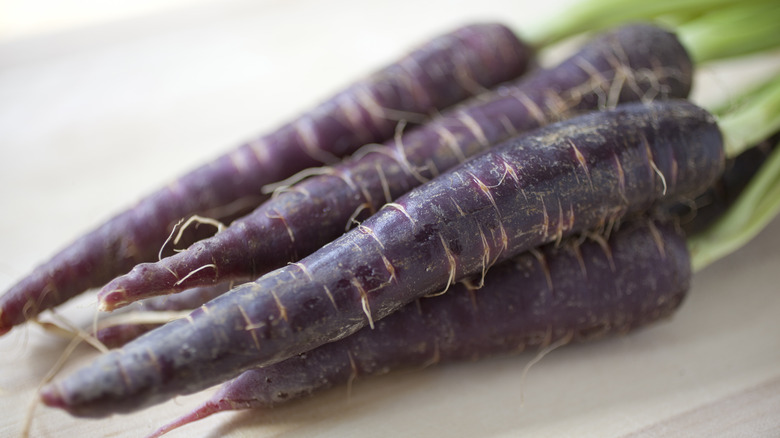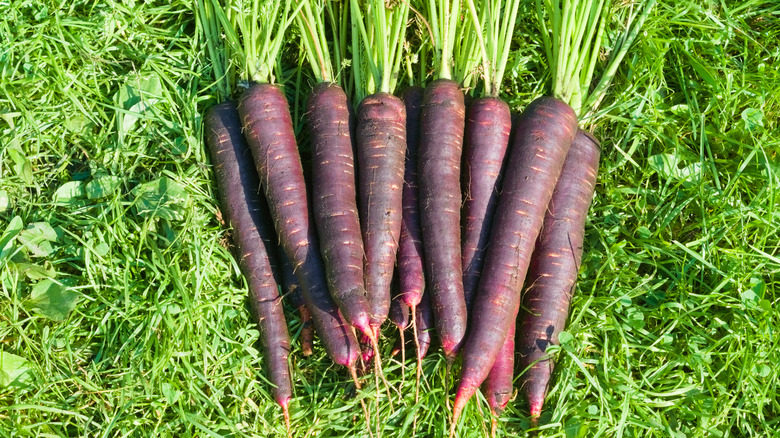Why Purple Was Once The Most Popular Carrot Color
If you enjoy cooking with vegetables, you're probably a pro at preparing dishes like a simple roasted carrot recipe. But did you know that those orange beauties aren't truly representative of carrots' culinary history? In the rich tapestry of carrot history, it may surprise many that purple was once the most popular color for this ubiquitous vegetable. Today, we associate carrots with their vibrant orange hue but this wasn't always the case. Centuries ago, carrots came in a range of colors, with purple reigning supreme. The preference for purple carrots can be traced back to their origins in Central Asia and the Middle East, where these colorful vegetables were cultivated long before the common orange variety gained prominence. But, why were they so popular? Let's take a look!
Purple carrots owe their distinctive hue to the presence of anthocyanins, which are natural pigments with antioxidant properties. The prevalence of purple carrots can be linked to their high nutritional value as anthocyanins are known for their potential health benefits. In addition to being visually striking, purple carrots offered a diverse set of nutrients, convincing people of why they needed to eat more carrots. Additionally, purple carrots offer a slightly sweeter flavor profile than their orange brothers, which made them a popular ingredient in various dishes when a lighter touch was needed in the carrot department.
Purple carrots have medieval roots
The cultivation of purple carrots reached its zenith during the medieval period when they were favored not only for their color but also for their supposed medicinal properties. The deep purple pigment, indicative of the presence of anthocyanins, was believed to have health-enhancing qualities. Ancient texts and herbal manuscripts mention purple carrots as valuable components of medicinal concoctions. As the centuries unfolded, the popularity of purple carrots waned, giving way to the rise of the orange variety. The orange carrot became the focal point of cultivation in the Netherlands during the 17th century. Dutch horticulturists selectively bred carrots to enhance their orange pigment, aligning with the Dutch national color. This selective breeding eventually led to the dominance of orange carrots, overshadowing the once-prevalent purple varieties.
Despite the decline in popularity, purple carrots have experienced a resurgence in recent times. The growing interest in heirloom and heritage vegetables, coupled with an appreciation for diverse flavors and colors, has led to a renewed appreciation for the rich history of purple carrots. Today, you can find purple carrots in farmers' markets and specialty stores, celebrated for their unique appearance, nutritional content, and historical significance that harks back to a time when purple was the reigning color in the world of carrots.

